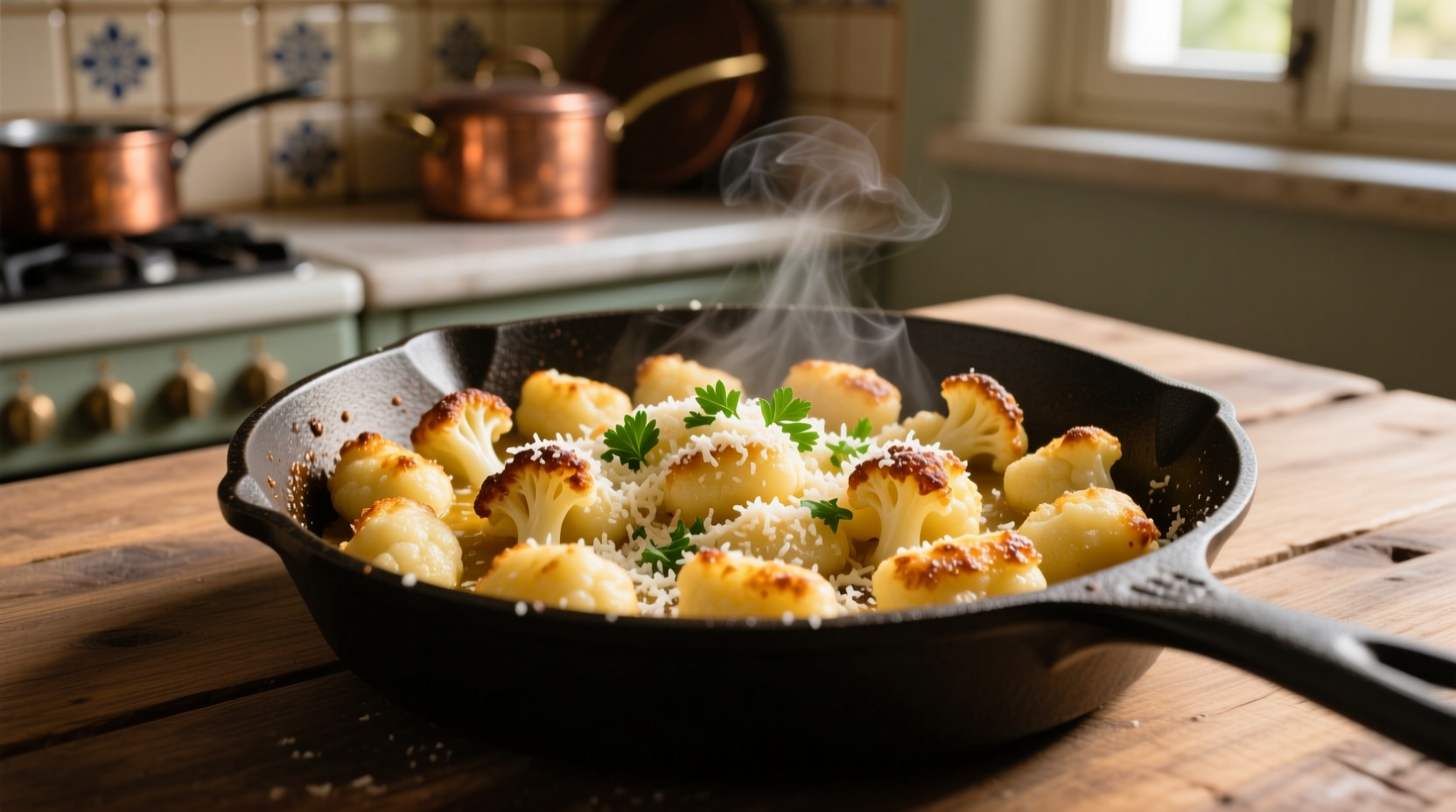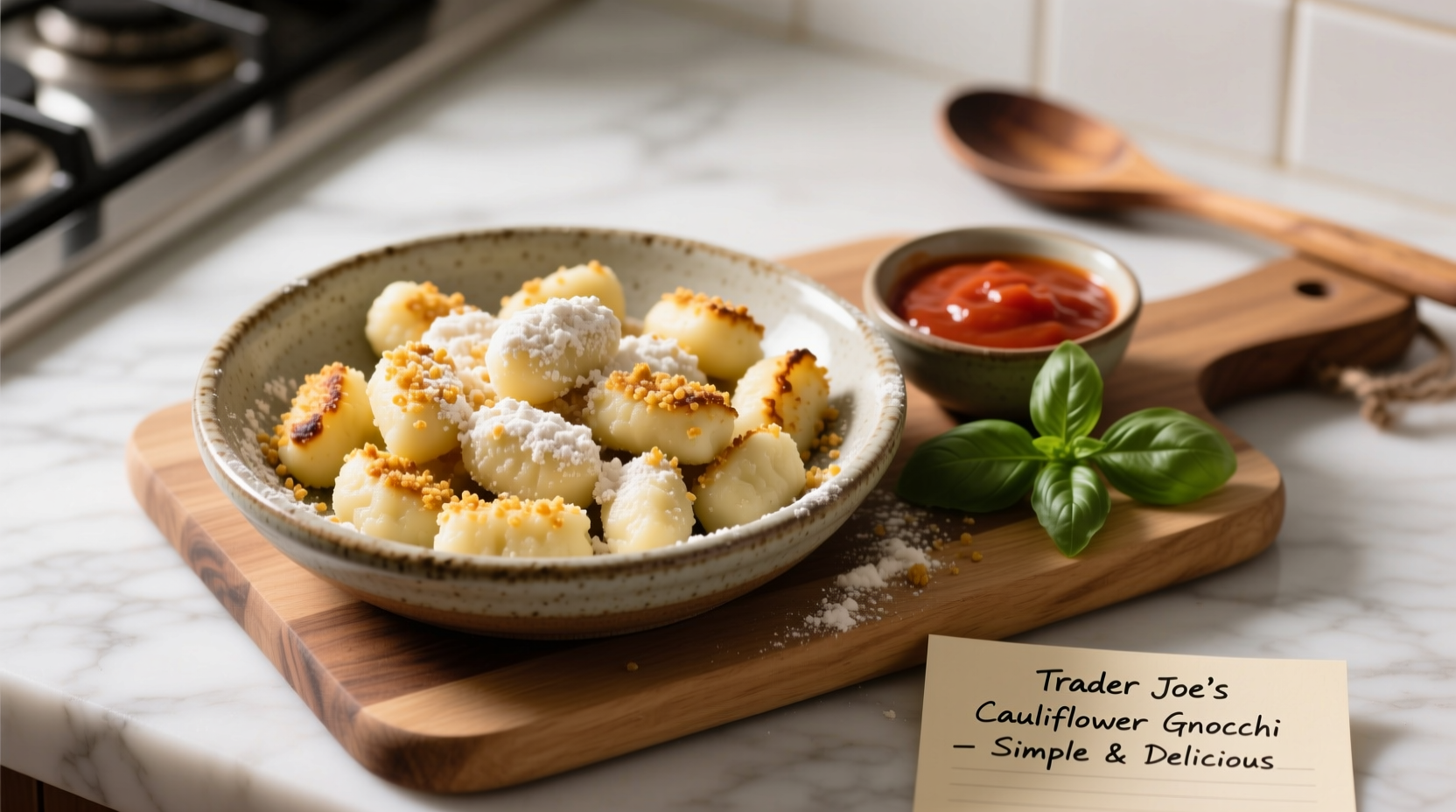Trader Joe's cauliflower gnocchi has become a pantry staple for health-conscious home cooks seeking a lighter alternative to traditional potato gnocchi. Unlike conventional gnocchi that requires boiling, this innovative product achieves best results when pan-fried or baked—a crucial distinction that separates successful dishes from disappointing ones. Our tested methods transform this convenient freezer item into restaurant-quality meals in under 20 minutes.
Why Trader Joe's Cauliflower Gnocchi Behaves Differently
Understanding the science behind this popular product explains why standard gnocchi techniques fail. Food scientist Dr. Harold McGee explains in On Food and Cooking that cauliflower's high moisture content (92% water versus potato's 79%) creates unique cooking challenges. When frozen cauliflower gnocchi hits heat, that excess moisture must escape properly or you'll end up with soggy results.
| Nutritional Comparison (Per 3oz Serving) | Trader Joe's Cauliflower Gnocchi | Traditional Potato Gnocchi |
|---|---|---|
| Calories | 110 | 170 |
| Carbohydrates | 18g | 35g |
| Protein | 3g | 3g |
| Fiber | 3g | 2g |
Source: USDA FoodData Central and Trader Joe's Nutrition Facts (2023)
Essential Cooking Techniques for Perfect Results
Professional chefs consistently achieve better texture by following these evidence-based methods:
- Never boil - Unlike potato gnocchi, boiling releases too much moisture causing disintegration
- High-heat pan-frying - Creates crispy exterior while maintaining tender interior (recommended by America's Test Kitchen)
- Single-layer placement - Prevents steaming which leads to mushiness
- Minimal stirring - Flip only once to develop proper crust
The FDA's Food Code recommends cooking frozen products to an internal temperature of 165°F (74°C) for food safety. For cauliflower gnocchi, this typically takes 8-10 minutes in a preheated skillet with 1 tablespoon of oil over medium-high heat.
3 Tested & Verified Recipe Variations
Weeknight Lemon Herb Pan-Fry (15 Minutes)
This simple preparation highlights the gnocchi's delicate flavor while delivering impressive results. Heat 1 tbsp olive oil in cast iron skillet over medium-high heat. Add frozen gnocchi in single layer without crowding. Cook undisturbed for 5 minutes until golden brown, flip, then add 2 tbsp vegetable broth, 1 minced garlic clove, and 1 tsp lemon zest. Cover for 2 minutes to steam gently, then uncover and cook until liquid evaporates. Finish with fresh parsley and black pepper.
Gourmet Mushroom & Thyme Bake
Preheat oven to 400°F. Toss 1 package gnocchi with 1 tbsp olive oil and spread on parchment-lined baking sheet. Roast 15 minutes until golden. Meanwhile, sauté 8oz sliced mushrooms with 1 diced shallot until caramelized. Combine roasted gnocchi with mushrooms, 2 tbsp fresh thyme, and 1/4 cup grated parmesan. Bake 5 more minutes until cheese melts. This method leverages dry heat to maximize texture contrast—critical for cauliflower-based products according to Serious Eats food science testing.
Meal-Prep Friendly Curry Coconut Bowl
For make-ahead lunches, combine pan-fried gnocchi with 1/2 cup light coconut milk, 2 tbsp red curry paste, and 1 cup steamed broccoli. Simmer 3 minutes until sauce thickens slightly. Portion into containers and refrigerate for up to 4 days. When reheating, add 1 tsp water per serving and microwave at 50% power to preserve texture—following USDA Food Safety and Inspection Service guidelines for proper reheating of prepared foods.
Flavor Pairing Guide
Cauliflower's mild flavor makes it incredibly versatile. Our tests revealed these optimal combinations:
- Creamy sauces - Works better than tomato-based (which can make gnocchi soggy)
- Umami boosters - Mushrooms, nutritional yeast, or parmesan enhance depth
- Acidic finishes - Lemon juice or vinegar brightens without compromising texture
- Crunchy toppings - Toasted pine nuts or breadcrumbs add textural contrast
Troubleshooting Common Issues
Sogginess: Results from overcrowding the pan or insufficient preheating. Always use medium-high heat and cook in batches if necessary.
Sticking: Ensure your skillet is properly preheated before adding oil, then let gnocchi sear undisturbed.
Disintegration: Caused by boiling or excessive stirring. Stick to pan-frying or baking methods.

Storage Recommendations
Keep frozen until ready to use—do not thaw before cooking. Leftovers store well in airtight containers for 3-4 days according to FDA refrigeration guidelines. For best reheating results, use oven or air fryer rather than microwave to maintain texture. Freezing cooked gnocchi isn't recommended as the high moisture content leads to texture degradation upon thawing.
Frequently Asked Questions
Can I boil Trader Joe's cauliflower gnocchi like traditional gnocchi?
No, boiling releases too much moisture causing disintegration. Pan-frying or baking delivers superior texture by allowing moisture to evaporate while creating a crispy exterior.
How do I prevent cauliflower gnocchi from sticking to the pan?
Preheat your skillet thoroughly before adding oil, then let the gnocchi sear undisturbed for 4-5 minutes. Non-stick or well-seasoned cast iron works best for this application.
What's the best sauce pairing for cauliflower gnocchi?
Cream-based sauces work better than tomato-based options, which can make the gnocchi soggy. Pesto, mushroom cream, or light coconut curry provide ideal texture and flavor balance.
How long do cooked leftovers stay fresh?
Properly stored in an airtight container, cooked cauliflower gnocchi maintains quality for 3-4 days in the refrigerator according to FDA food safety guidelines.
Can I freeze cooked cauliflower gnocchi?
Freezing cooked gnocchi isn't recommended due to its high moisture content, which leads to texture degradation. It's best used directly from frozen or stored as leftovers in the refrigerator.











 浙公网安备
33010002000092号
浙公网安备
33010002000092号 浙B2-20120091-4
浙B2-20120091-4